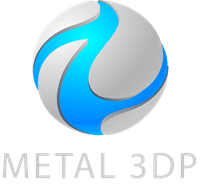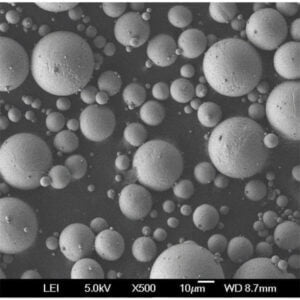Imagine a world where you can create complex metal components with exceptional strength, all while streamlining the manufacturing process. That’s the magic of sinter-hardening alloy powders. These tiny, metallic marvels are revolutionizing the way we produce parts for countless applications. But before we delve into their world, let’s rewind a bit.
The function of sinter-hardening alloy powder
Think of sintering as a high-five on an atomic level. Here’s the lowdown:
- 파우더 파워: Metal powders, meticulously crafted from various alloys, form the base.
- Compaction is Key: These powders are pressed under immense pressure, creating a “green” part with a desired shape.
- The Heat is On: The green part is then subjected to high temperatures (but below the melting point of the metal) in a furnace. This is where the magic happens.
- Atomic Bonding: During sintering, the metal particles bond together at their atomic interfaces, forming a solid and robust structure.
Sinter-Hardening: Taking Strength to the Next Level
Now, let’s add a twist to the story. In sinter-hardening, the cooling stage after sintering plays a crucial role. By rapidly cooling the part, a metallurgical transformation occurs. Here’s the gist:
- The Transformation: Rapid cooling traps certain elements within the metal’s crystal structure, forming a harder and more robust phase called martensite. It’s like catching a fleeting moment in the metal’s atomic dance, locking in its strength.

A Universe of Metal Powders: Unveiling the Top 10 Contenders
With such a powerful technique, it’s no surprise that a diverse range of metal powders are used for sinter-hardening. Here are 10 of the most popular contenders, each with its unique strengths:
| 금속분말 | 설명 |
|---|---|
| Distaloy AE | An iron-carbon alloy offering a balance of hardness, machinability, and cost-effectiveness. |
| Astaloy Mo | Exceptionally wear-resistant due to molybdenum content, ideal for gears, cams, and bushings. |
| Flamet 4800 | High-performance option with superior strength and toughness due to high nickel content, suitable for connecting rods and sprockets. |
| Ancorsteel 85HP | Nickel-chromium-molybdenum alloy excelling in both strength and corrosion resistance, perfect for valves, pumps, and fasteners. |
| Hoeganaes DM | Pre-alloyed iron powder catering to specific magnetic properties, used in electromagnetic components and sensors. |
| Astaloy CrM | Chromium-molybdenum alloy maintaining exceptional dimensional stability during sintering, ideal for complex geometries. |
| FC-0205 | Economical iron-carbon alloy offering a balance of affordability and decent strength, suitable for non-critical applications. |
| Astaloy CrB | Chromium-boron alloy forming a protective layer for excellent corrosion resistance. |
| AMPCOLOY 94M | Molybdenum-rich alloy retaining strength at elevated temperatures, perfect for heat-exposed components. |
| 스테인리스 스틸 파우더 | Various grades (like 316L) offering corrosion resistance alongside decent strength, ideal for medical or food processing applications. |
응용 소결 경화 합금 분말
Sinter-hardening alloy powders aren’t just a one-trick pony. They offer a compelling combination of benefits that make them a preferred choice for many applications. Let’s delve into these advantages:
- 뛰어난 강도: Compared to traditional sintering, the rapid cooling process in sinter-hardening creates a harder and more robust microstructure. This translates to parts that can withstand higher loads and stresses. Imagine replacing bulky components with lighter, sinter-hardened alternatives without compromising on strength.
- Enhanced Wear Resistance: Certain alloying elements, like molybdenum, excel at combating friction and wear. This makes sinter-hardened parts ideal for components that experience constant movement and contact, such as gears and bushings. They can significantly extend the lifespan of these parts, reducing maintenance costs and downtime.
- 치수 정확도: The controlled compaction and sintering process allows for the creation of parts with tight tolerances and consistent dimensions. This eliminates the need for extensive post-processing, saving time and resources. Think of complex geometries being produced with remarkable precision.
- 비용 효율성: While the initial cost of the metal powders might seem higher, sinter-hardening offers several cost-saving advantages. The process often eliminates the need for secondary heat treatment steps, saving on energy consumption and processing time. Additionally, the high-precision nature of the process minimizes material waste.
- 디자인 유연성: Unlike traditional machining techniques that are limited by tool geometry, sinter-hardening allows for the creation of intricate shapes and near-net shapes. This opens doors for innovative and complex component designs that were previously impossible.
- 소재의 다양성: As we saw with the top 10 contenders, a wide range of metal powder compositions are available for sinter-hardening. This allows for tailoring the material properties to the specific needs of the application. Need exceptional corrosion resistance? There’s a powder for that. High-temperature strength? You’ve got it.
단점 Sinter-Hardening Alloy Powders
While sinter-hardening boasts a range of advantages, it’s essential to be aware of its limitations:
- 재료 제한: Not all metals are suitable for sinter-hardening. The process works best with alloys that readily form martensite during rapid cooling. This might restrict the choice of materials for certain applications.
- 부품 크기 제약 조건: Due to the challenges in achieving uniform cooling rates throughout larger parts, sinter-hardening is typically better suited for smaller components. Very large parts might not achieve the desired level of hardness throughout their entire volume.
- Porosity Considerations: Sintering, by nature, leaves behind some porosity in the final part. While sinter-hardening can densify the structure compared to regular sintering, there might still be some level of porosity present. This can be a concern for applications requiring complete gas or liquid impermeability.
- Process Control Importance: The success of sinter-hardening hinges on precise control over the entire process, including powder selection, compaction pressure, sintering temperature, and cooling rate. Any deviations from these parameters can negatively impact the final properties of the part.
Applications of Sinter-Hardening Alloy Powders
We’ve already explored how sinter-hardening shines in the automotive and appliance industries. But its reach extends far beyond these sectors. Here’s a broader look at its diverse applications:
| 산업 | 애플리케이션 |
|---|---|
| 항공우주: Gears, landing gear components, lightweight structural parts | |
| 의료: Surgical instruments, dental implants, bone repair cages | |
| Firearms: Gun parts, trigger components | |
| 하드웨어: Tools, fasteners, lock components | |
| 전자제품: Connectors, heat sinks, electromagnetic components | |
| 전동 도구: Gears, motor components, transmission parts |
Choosing the Right Sinter-Hardening Alloy Powder
With such a vast array of metal powders available, selecting the right one for your application can feel overwhelming. Here are some key factors to consider:
- 원하는 속성: Identify the most crucial properties for your part, such as strength, wear resistance, corrosion resistance, or dimensional accuracy.
- 신청 요건: Consider the specific demands of your application, including load conditions, operating temperature, and environmental exposure.
- 비용 고려 사항: Weigh the initial cost of the powder against the potential cost savings from factors like reduced processing steps and improved part life.
- 파트 지오메트리: The complexity of your part’s geometry might influence your choice of powder. Some powders offer better dimensional stability during sintering, making them ideal for intricate shapes.
다음 공급업체 Sinter-Hardening Alloy Powders
The success of your sinter-hardening project hinges on securing high-quality metal powders and partnering with a reliable supplier. Here are some key considerations when searching for a supplier:
- 평판 및 경험: Look for a supplier with a proven track record in the industry and expertise in sinter-hardening alloy powders. They should be able to provide technical guidance and support throughout the selection process.
- Material Variety: A supplier with a diverse portfolio of metal powders allows you to explore various options and find the perfect match for your specific needs.
- 품질 관리 조치: Strict quality control procedures are paramount. Ensure the supplier adheres to industry standards and can guarantee the consistency and purity of their metal powders.
- 기술 지원: Having access to knowledgeable technical staff from the supplier is invaluable. They can answer your questions, assist with material selection, and offer troubleshooting assistance if needed.
- 경쟁력 있는 가격: While cost shouldn’t be the sole deciding factor, it’s still important to get quotes from multiple suppliers to ensure you’re receiving a fair price.
Specifications, Sizes, and Grades of Sinter-Hardening Alloy Powders
The world of sinter-hardening alloy powders is vast, with variations in specifications, sizes, and grades. Here’s a breakdown to help you navigate this landscape:
| 속성 | 설명 |
|---|---|
| 화학 성분 | This refers to the specific elements and their weight percentages within the metal powder. Different compositions offer distinct properties. |
| 겉보기 밀도 | This indicates the weight of powder per unit volume in its loose, uncompacted state. |
| 유량 | This measures how easily the powder flows, impacting its suitability for automated filling processes. |
| 입자 크기 분포 | The distribution of particle sizes within the powder can influence packing density and final part properties. |
| Sintering Atmosphere | Some powders require specific atmospheres (e.g., inert gas) during the sintering process. |
| 파우더 등급 | Powders can be categorized by various grades, often designated by a letter or number system. These grades signify variations in composition, particle size, and other properties. |
| 사용 가능한 크기 | Metal powders are typically available in various standard particle size ranges, measured in microns (µm). |

가격 Sinter-Hardening Alloy Powders
The cost of sinter-hardening alloy powders can vary depending on several factors, including:
- 머티리얼 구성: Exotic alloys with rare earth elements will typically be more expensive than common iron-carbon alloys.
- 파우더 등급: Higher-purity grades with tighter particle size control often command a premium price.
- 볼륨: Purchasing larger quantities of powder can sometimes lead to volume discounts from suppliers.
- 시장 변동: Global metal prices can impact the cost of raw materials used in the powder production process.
Here’s a general range to provide a starting point (expect significant variations based on the factors mentioned above):
- Iron-carbon alloy powders: $2 – $5 per kilogram
- 저합금 강철 분말: $3 – $7 per kilogram
- Nickel-alloy powders: $5 – $10 per kilogram
- 스테인리스 스틸 파우더: $7 – $15 per kilogram
자주 묻는 질문
Q: What are the advantages of sinter-hardening over traditional sintering?
A: Sinter-hardening offers superior strength, enhanced wear resistance, and improved dimensional accuracy compared to traditional sintering. It can also be more cost-effective due to reduced processing steps and minimized material waste.
Q: Are there any limitations to using sinter-hardening alloy powders?
A: Not all metals are suitable for sinter-hardening, and part size constraints exist. Additionally, some level of porosity might remain, and precise process control is crucial for success.
Q: What are some common applications of sinter-hardening alloy powders?
A: They are widely used in automotive, appliance, aerospace, medical, firearms, hardware, electronics, and power tool industries for various components.
Q: How do I choose the right sinter-hardening alloy powder for my application?
A: Consider desired properties, application requirements, cost, and part geometry. Consult with a reputable supplier for expert guidance.













